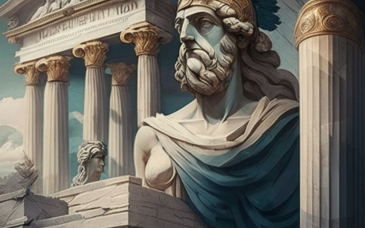Ancient Greece, hailed as the cradle of Western civilization, unfolds its rich tapestry of history, culture, and philosophy on the canvas of its geographical landscape. Join us on a visual expedition as we explore the map of Ancient Greece, unlocking the secrets of city-states, mythical realms, and the birthplace of democracy.
1. City-States and Geographical Diversity: The map of Ancient Greece reveals a mosaic of city-states, each with its own character and governance. Athens, Sparta, Corinth, and Thebes emerge as prominent players, showcasing the diverse political and cultural tapestry that shaped this ancient Hellenic world.
2. The Aegean Archipelago: Islands of Myth and Beauty: Navigate the Aegean Sea, where a multitude of islands dot the landscape. From the mythical birthplace of Zeus on Crete to the intellectual haven of Samos, each island tells a unique story, adding layers to the cultural and maritime legacy of Ancient Greece.
3. Peloponnesian Peninsula: Epicenter of Power Struggles: Dive into the Peloponnesian Peninsula, a region marked by the powerful city-states of Athens and Sparta. The map unveils the strategic locations, trade routes, and military alliances that set the stage for the Peloponnesian War, a defining chapter in Greek history.
4. Delphi and Olympia: Sacred Sanctuaries: Discover the sacred sites of Delphi and Olympia, highlighted on the Ancient Greek map. Delphi, nestled on the slopes of Mount Parnassus, was revered as the center of the world, while Olympia hosted the renowned Olympic Games, fostering a sense of unity and religious devotion.
5. The Ionian Coast: Cultural Flourishing and Trade: Trace the Ionian Coast, where city-states like Miletus and Ephesus flourished. The map illustrates the influence of Greek colonies in fostering cultural exchange, trade, and the spread of Hellenic civilization to the far reaches of the ancient world.
6. Mountainous Terrain and Natural Boundaries: The topography of Ancient Greece, characterized by mountain ranges like the Pindus and natural boundaries like the Corinthian and Saronic Gulfs, played a crucial role in shaping the autonomy and distinct identities of various city-states.
7. Roads and Connectivity: The Ancient Greek World in Motion: Explore the network of roads and maritime routes crisscrossing the landscape. These routes facilitated communication, trade, and the movement of armies, creating a dynamic and interconnected Ancient Greek world.
The map of Ancient Greece is not just a geographical guide; it is a portal to a bygone era that laid the foundations of Western civilization. As we navigate through city-states, mythical landscapes, and cultural hubs, the map becomes a key to unlocking the complexities and enduring legacy of Ancient Greece—a realm where democracy, philosophy, and the arts flourished, leaving an indelible mark on human history.

